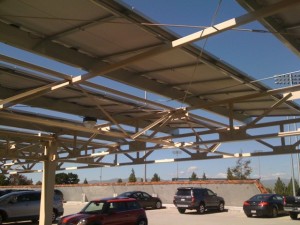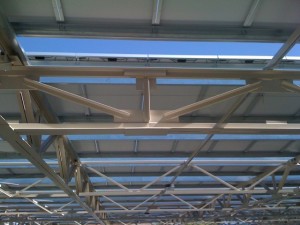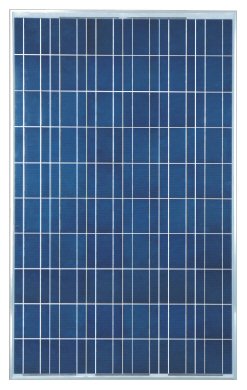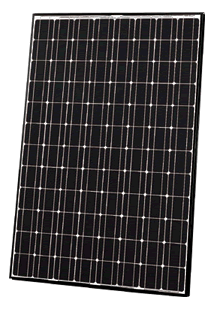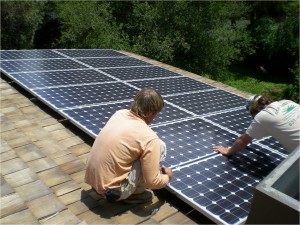What is the best option?
Here is another decision that is usually answered rather quickly and early on in the solar decision making tree. First of all, there is a major distinction that needs to be clear about PV solar systems. One option is to install a “Grid Tied” system. That means, the solar system will be connected to your utility company’s network(the electric panel). The other option is to be “Off the Grid” which would mean the system does not connect to your electric panel(imagine you live where there is no electric company, i.e you don’t have an electric bill) There are quite a few variations, but that is the general idea.
Why would you want a Grid Tied System?
People chose grid tied systems for many reasons. Here are a few: cost, net-metering, incentives, less maintenance, more installers know how to install them.
Cost
Grid Tied systems have the following costs: panels, inverters, disconnects switches, wiring, mounting hardware, labor to install, permits if necessary(usually a nominal fee, nothing too big)
Net-Metering
The net metering option allows a “grid tied” system to connect to the grid and put excess unused electricity back into the grid, otherwise it would be wasted. This is a benefit because the owner of the system can effectively “sell back” their electricity if they don’t use it. This doesn’t mean the electric company will be writing you a check everyday, but they very well may give you a credit on your electric bill if you have given them more electricity than you have used for a particular month.
Incentives
In some states and areas, solar incentives are only eligible for “grid tied” systems. That is something you will want to check with your local solar professional.
Maintenance
Grid tied systems are by and large, much easier to maintain. When installed correctly, they can run on their own for an indefinite amount of time. If you are having to tweak and mess with a grid tied system after it has been installed, than the installation was not done correctly. These are no hassle systems after they have been implemented which is one of the major reasons grid tied systems are so popular worldwide.
Why Would you want an Off Grid System
People tend to chose off grid systems because they are not near utility power, the utility company is not reliable(3rd world countries), want a sense of energy independence, want a backup supply of electricity if the power goes down, and many more.
Utility Power is Far Away
If the local utility lines are so far away that it is too expensive to pay for new lines, an off grid system might be a good match for you.
Not Reliable Utility Company
Some people on the planet have such horrible times actually receiving electricity from their local or government utility company that it simply is not an option to rely on that, this makes off grid solar a good option.
Energy Independence
If you really put a value on supplying your own energy all of the time, and want to tell the utility company to disconnect your lines, off grid solar could be perfect for you. That is what it allows you to do.
Backup Power
There is an “off grid” but still “on grid” hybrid way to this too. If you wan to be connected to the utility company, like the “on grid model” but still want to have a guaranteed source of power if the utility power ever goes out like from a hurricane. You can create a hybrid solar system. This would actually connect to the grid, but would have batteries which would store power too. This way, if the power went off, you would still have electricity in your batteries to use., and the sun to generate more power over the coming days.
Here is some information on how to do that

